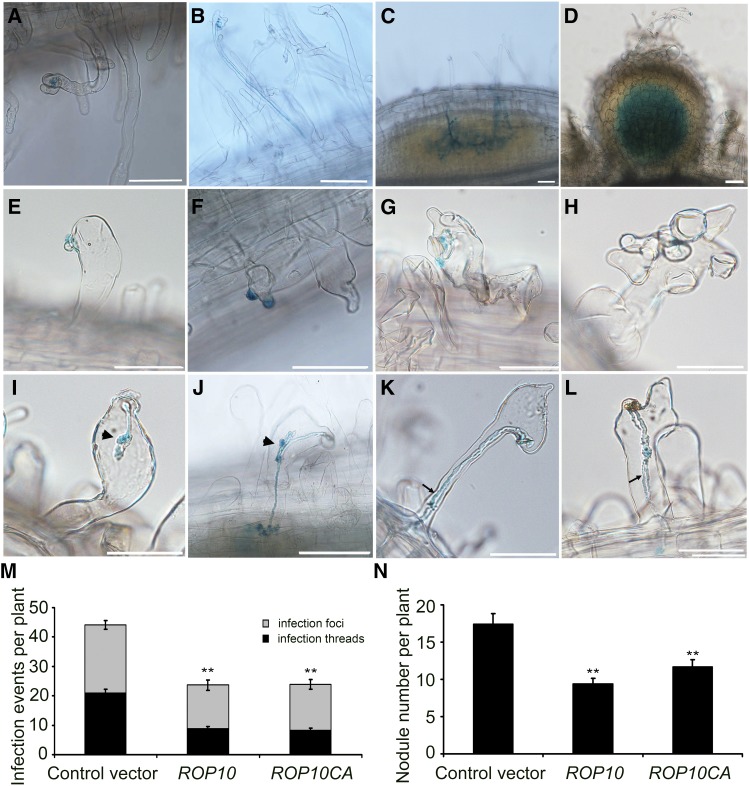Figure 4.
Overexpression of Wild-Type ROP10 and ROP10CA Affects Rhizobial Infection and Nodulation of M. truncatula.
(A) to (D) Control roots transformed with the empty vector showed a normal infection process of root hairs. Rhizobia are present in the infection pocket of a curled root hair tip (A), in the infection thread that extends within a curled root hair (B), in infection threads that ramify into a fine network in the nodule primordium (C), and in a developing nodule (D).
(E) to (L) Roots overexpressing ROP10 showed an aberrant infection process in swollen root hairs. Microcolonies of bacteria were often absent in swollen root hairs (E). Frequently, more than one outgrowth in a single root hair were observed ([F] to [H]) and infection threads aborted due to the formation of a sac-like structure (arrowhead) (I). Occasionally, a new infection thread was initiated from the sac-like structure and reached the root cortex (J). Double infection threads were also observed in a single root hair ([K] and [L]).
Rhizobia were detected by β-galactosidase staining with 5-bromo-4-chloro-3-indolyl β-d-galactopyranoside. Photographs were taken 7 d after inoculation with S. meliloti. Bars = 100 μm.
(M) Overexpression of ROP10 and ROP10CA led to a significant reduction of root hair infection. Infection events include observed infection foci and infection threads. The infection events were scored at 7 d after inoculation.
(N) Overexpression of ROP10 and ROP10CA resulted in reduced nodulation. The number of nodules on transgenic roots per plant was scored at 14 d after inoculation.
Statistical significance (**P < 0.01) was evaluated by Student’s t test. Error bars indicate se. Data presented are representative of three independent experiments.

